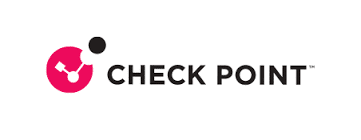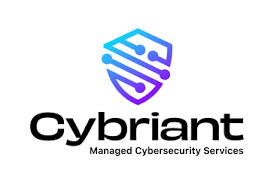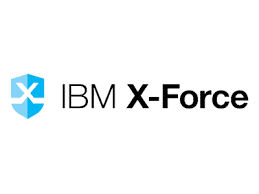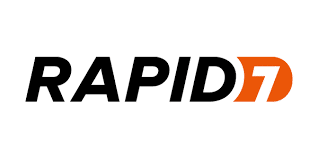The 10 Best Incident Response Tools
Incident response tools are the foundation of your incident response strategy. In case of a security incident, they can immediately help contain, investigate, and mitigate the attack. Some tools also help with alerting about potential attacks and with digital forensics for compliance purposes following an attack.
In this article, we’ll investigate some of the best tools incident response teams have at their disposal to ensure that incidents are resolved optimally, with as little damage as possible. We chose them based on their ability to fully and expertly support organizations during attacks, on-demand availability for security teams, and the additional professional services they offer. We also aim to cater to a wide range of organizations, from SMEs to global enterprises.
Top 10 Incident Response Tools
When it comes to incident response tools, you’ve got a lot of choices—both paid and open source. However, tools come in different flavors, and understanding their capabilities and pricing is essential for making the right choice. Whichever tool you choose, we recommend evaluating the market before a security incident occurs, so you already have the experts in place when you really need them. During an attack, time is of the essence. Below are the top 10 tools to evaluate:
1. Cynet CyOps
Cynet offers around-the-clock, expert-led incident response services that operate as an additional layer on top of the Cynet platform. A 24/7 SOC team continuously monitors alerts and informs customers of real-time critical security events while guiding them through the response process. In addition, customers can submit files to the team for investigation.
Core features:
- Alert Monitoring – Classifying and prioritizing alerts and informing customers of active threats.
- Threat Hunting – Proactively looking for hidden threats based on internal investigation tools and external intelligence feeds.
- File Analysis – Evaluation of suspicious files sent over by proactive customers.
- Attack Investigation – Analysis of validated attacks to understand scope and impact, and share IoC with customers.
- Whitelisting – Configuring alert mechanisms for pre-approved workloads to reduce false positives.
- Remediation Instructions – Guidance for customers with information on the endpoints, files, user, and network traffic that should be remediated.
- Lighthouse – Credential theft monitoring
Best for:
SMEs and MSPs that need an extended security team to help identify and remediate active threats.
Pricing:
Cynet’s incident response services are offered in both packages:
- Elite – XDR platform with 24X7 MDR support, starting at $7/month/endpoint.
- All-in-One – Full enterprise security platform with 24X7 MDR support, starting at $10/month/endpoint.
2. Check Point
A 24/7 service to help organizations quickly detect, contain, and recover from cyberattacks. They manage the entire incident lifecycle, from initial triage and containment to detailed post-incident analysis and reporting.
Core features:
- Incident Lifecycle Management – End-to-end management from triage to remediation, with documentation and support.
- Threat Context – Enabling faster threat response based on insights from internal researchers, CERTs, and law enforcement.
- Guidance – Supporting improved responses for containment, elimination, and recovery.
- Incident Preparation – Proactively preparing systems, networks, IT staff, and teams for worst-case scenarios.
Best for:
Enterprises that already have a SOC team and need another layer of expert assistance in case of an attack.
Pricing:
Services are charged in the per-hour pricing model. They have suggested hours, but are scoped when needed.
3. CybriantXDR
A 24/7 service that continuously monitors and analyzes alerts, complementing AI-based threat detection and prevention. It includes Managed SIEM, Managed Detection and Response (MDR), and Vulnerability Management.
Core features:
- 24/7 Security Monitoring & Analysis – Continuous surveillance to assess risks in real-time and respond to them.
- Real-Time Threat Detection & Prevention – Using ML and AI to detect and neutralize threats before they can cause harm.
- Remediation – Expert insights that help organizations minimize impact and restore normal operations promptly.
- End-to-End Visibility – Comprehensive oversight across the entire organization.
Best for:
Mid-sized organizations that either have an internal SOC team or a dedicated security team and need to support and complement their activities.
Pricing:
A 30-day free trial is available to assess service effectiveness. Further pricing is available on direct contact with the company.
4. Palo Alto Networks
Unit 42 is the threat intelligence and incident response division of Palo Alto Networks. It helps organizations prepare for, respond to, and recover from cyberattacks. Their approach is intelligence-driven, combining deep threat research with hands-on incident response to address a wide range of cyber threats, including complex ransomware, advanced persistent threats (APTs), and nation-state attacks.
Core features:
- Ransomware Investigation and Negotiation – Incident analysis and negotiation to help organizations restore operations.
- Cloud Incident Response – Cloud breach containment, assessment, and security with Palo Alto security tools.
- APTs – Threat intelligence and leveraging of tools to respond to sophisticated attacks.
- Business Email Compromise – Email breach containment, investigation, and recovery plan.
Best for:
Mega-scale enterprises or organizations undergoing complex incidents.
Pricing:
Unit 42 services are based on custom quotes, available from the vendor.
5. CrowdStrike
Around-the-clock incident response services, deploying expert teams worldwide within hours to stabilize crises. Their approach focuses on rapid containment to prevent adversaries from escalating attacks, thereby minimizing business disruption and reducing breach recovery time and financial impact.
Core features:
- Incident Response and Containment – Breach containment and system restoration within hours.
- Remediation – Forensic investigations and guidance to harden defenses against future breaches.
- Recovery – System restoration and data integrity verification with minimal downtime.
- Threat Intelligence – Tracking of adversary groups and deriving insights to investigations.
- AI Approach – Reverse engineering, data review, attacker tactic analysis, and summarization of findings based on AI.
- Integrated Response with Legal and Insurance Partners – Streamlining incident response through connections with law firms and cyber insurance providers.
Best for:
Large companies running mission-critical operations and/or in regulated industries, in need of fast and comprehensive incident response.
Pricing:
Incident response services are available as a retainer, applicable to incident response and other security services. Pricing is provided directly by the vendor.
6. Kaspersky
Kaspersky’s Incident Response services help organizations manage and recover from cybersecurity incidents. Their approach encompasses the full incident lifecycle, from initial detection to final remediation.
Core features:
- Comprehensive Investigation -Analysis to identify compromised systems, isolate threats, and prevent further spread. This includes reconstructing the incident timeline and understanding the attack’s logic.
- Digital Forensics – Examination of digital evidence to uncover the root cause and impact of the breach.
- Malware Analysis – If malware is involved, Kaspersky provides detailed insights into its behavior and functionality, aiding in the neutralization and prevention of similar future attacks.
- Tailored Remediation Plans – Recommendations to restore affected systems and enhance overall security posture.
Best for:
Government, finance, and critical infrastructure.
Pricing:
Available upon direct connection to the vendor.
7. SentinelOne
SentinelOne’s Vigilance MDR + DFIR combines Managed Detection and Response (MDR) with Digital Forensics and Incident Response (DFIR). It’s designed to provide organizations with comprehensive, 24/7 protection and expert support throughout the entire incident lifecycle.
Core features:
- Managed prevention, detection, and response to emerging threats
- Analysis and response to threats
- Forensic investigation, including RCA, breach/exfil determination, malware reverse engineering, memory analysis, and more
- In-demand investigations and response planning
- Quarterly configuration health checks
- Active threat hunting
- Custom threat hunting
Best for:
Large enterprises in need of customized incident response or an extra layer of assistance to combat threats.
Pricing:
Not a core SentinelOne service; the cost is customized upon demand.
8. IBM X-Force
IBM’s X-Force Incident Response Services help organizations prepare for, respond to, and recover from cybersecurity incidents. These services combine proactive planning and around-the-clock rapid response capabilities.
Core features:
-
- Incident response and cyber crisis management – Emergency incident response support with forensic analysis, incident command, deep/dark web analysis, and insights from IBM and partners, based on predefined playbooks.
- Incident Response for OT – A Comprehensive incident response program for OT and IoT environments.
- Active Threat Assessment – A compromise assessment to uncover undetected threats, providing visibility of unauthorized activity, misconfigurations, vulnerabilities, and potentially unwanted applications.
- Ransomware Readiness Assessment – An assessment to identify control gaps, with actionable recommendations to improve incident response capabilities in case of ransomware.
- Cyber Range Exercises – Training and testing incident response through tabletop exercises, hands-on investigation of crisis-level executive experiences.
- Design and Build Consulting – A realistic and immersive training environment for the organization to simulate real-world scenarios and challenges.
Best for:
Large organizations that are taking their first steps in advanced security and need thorough guidance, and/or organizations with legacy systems, and/or IoT/OT.
Pricing:
A 1-hour briefing is available for free. Further pricing is customized to each customer.
9. Rapid7
Rapid7 offers 24/7 incident response capabilities, as well as preparatory services that help organizations prepare, test and enhance incident response capabilities.
Core features:
-
- Expert Support – Experts on standby, ready to respond within one hour of a breach.
- Investigations – Gathering details, monitoring, digital forensics, threat hunting, and more.
- DFIR Framework – Use of Velociraptor, and advanced open-source endpoint monitoring, digital forensic, and cyber response platform.
- Program development – A customized incident response plan based on current capabilities and recommendations.
- Detection and response workshop – Simulation of a live attack, with coaching and feedback.
- Compromise assessment – Identification of past or current attack activity and recommendations for defense reinforcement.
Best for:
Organizations of any size that need tailored guidance on preparing for a cybersecurity incident.
Pricing:
Services are offered in 40-hour block retainers. Unused hours can be repurposed for other professional services.
10. Mandiant (acquired by Google Cloud)
Mandiant Managed Defense is a 24/7 MDR service offered by Google Cloud. It combines Mandiant’s frontline threat intelligence and incident response expertise with Google’s security tools to enhance threat detection, investigation, and response capabilities for organizations.
Core features:
-
- Continuous Monitoring – Threat detection and response, leveraging advanced analytics and proactive threat hunting and investigation to identify and mitigate cyber threats.
- Alerts -Triage, investigation, and prioritized escalation with curated recommendations.
- Incident Resolving – Containing impacted hosts, investigations, and actionable guidance without the need for formal incident response.
- MITRE ATT&CK Mapping – Threat hunters map results to the framework to identify compromised controls.
- Telemetry Monitoring with Google SecOps and partner technologies.
- Integrations – With CrowdStrike, SentinelOne, Microsoft, Trellix, and Corelight to accelerate response.
Best for:
Organizations with existing security teams experiencing non-sophisticated attacks.
Pricing:
N/A
How Does Cynet Automate Incident Response?
Cynet’s holistic cybersecurity solution automates your incident response policy with automated playbooks that help detect and remediate threats. Cynet’s Response Orchestration allows users to define playbooks with pre-set or custom remediation actions for multiple attack scenarios, including when to use automation and when to involve humans as part of the response.
Cynet Response Orchestration covers infected endpoints, malicious processes or files, attacker-controlled network traffic, or compromised user accounts.
FAQ
Incident response tools automate the manual tasks that slow down an organization’s response time, like collecting forensic data, generating alerts, correlating logs, and applying containment actions. These tools often feature guided playbooks or workflows that help ensure responses are consistent, repeatable, and in line with industry best practices. They also offer real-time dashboards and collaboration features that allow security teams to manage an incident as it unfolds, further streamlining and standardizing the process.
SIEM and SOAR solutions are part of the incident response tools category. Data and alerts are pulled for SIEM. That information is used by SOAR solutions to initiate incident workflows, automate investigations, or trigger predefined response actions.
A strong incident response solution transforms reactive cybersecurity into a proactive and strategic function. Incident response tools enable faster detection and containment of threats, limiting the damage caused by breaches and reducing the likelihood of business disruption. Over time, the insights generated from repeated incidents help organizations identify recurring weaknesses and close them accordingly, strengthening the overall security posture.
Incident response tools should offer 24X7 availability and responsiveness within hours. They should help contain and mitigate the attack and help analyze it. In addition, they should alert about potential attacks through their own threat hunting and intelligence monitoring.
Regulations like GDPR, HIPAA, PCI DSS, and NIS2 require organizations to demonstrate their ability to detect, respond to, and recover from security incidents. Incident response tools help fulfill these mandates by maintaining detailed logs of incident activities, timelines of response efforts, and audit trails of who did what and when. These records can be essential during regulatory audits or breach investigations.
Related Posts
Looking for a powerful, cost effective XDR solution?
- Full-Featured XDR, EDR, and NGAV
- Anti-Ransomware & Threat Hunting
- 24×7 Managed Detection and Response








